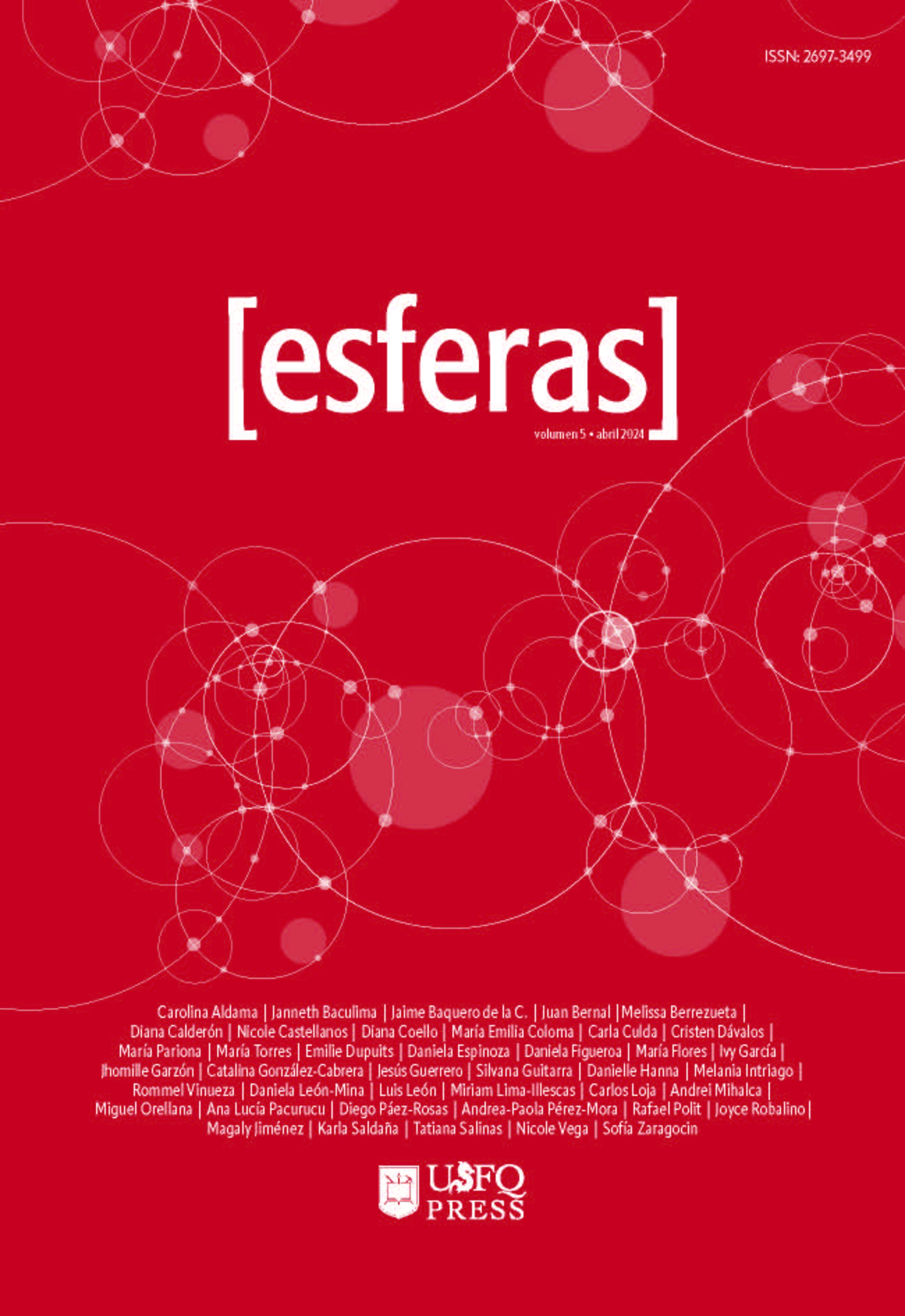Journalism for conservation in Ecuador: when the media talk about the environment
Published 2024-04-01
Keywords
- Sustainability,
- Sustainable Communication,
- Environmental Journalism,
- Media Agendas
How to Cite
Copyright (c) 2024 Juan David Bernal Suárez, Nicole Castellanos

This work is licensed under a Creative Commons Attribution-NonCommercial 4.0 International License.
Abstract
This article discusses the results and the development of the link project "Journalism for the Conservation and Care of the Environment" developed by the Universidad Hemisferios, the Charles Darwin Foundation and the University of Saint Thomas (Minnesota) whose objective was to train journalists, editors, photographers and audiovisual producers in the generation of high-quality content on environmental issues. The methodology used was training through four workshops in the Galapagos, the Amazon and Quito, which provided the participants with tools to correctly address issues such as the environment, global warming, environmental false news, the defense of biodiversity in the media. and the protection of ecosystems. The program was able to train more than 100 communicators in Ecuador, improving the quality of environmental content in the Ecuadorian media and increasing the quantity and excellence of the materials produced around these issues. The program was sponsored by the Embassy and Consulate of the United States in Ecuador.
Downloads
References
- Capra, F. (2016). The Systems View of Life: A Unifying Vision. Londres: Cambridge University Press.
- González Vallejo, R. (2023). La transversalidad del medioambiente: Facetas y conceptos teóricos. Región Científica, 2-8.
- Jamil, S., & Bhuju, K. (2023). Environmental journalism education beyond the conventional pedagogical approaches: Exploring the scope of experiential learning to train Pakistan’s journalism students. Media Asia, 4-23.
- Jonsson, A. M., & Appelgren, E. (2021). Engaging Citizens for Climate Change—Challenges for Journalism. Digital Journalism, 755-772.
- Junsheng, H., Akhtar, R., Mehedi Masud, M., Sohel Rana, M., & Banna , H. (2019). The role of mass media in communicating climate science: An empirical evidence. Journal of Cleaner Production, 9-12.
- Muxtabar Abdujabbarovna, G. (2023). The Role of Media in Covering Environmental Issues: A Comprehensive Analysis. Texas Journal of Multidisciplinary Studies, 131-135.
- Observatorio de la comunicación del cambio climático. (2022). DECÁLOGO 2022 DE RECOMENDACIONES PARA LA COMUNICACIÓN DEL CAMBIO CLIMÁTICO EN EL ACTUAL CONTEXTO DE TRANSICIÓN ECOLÓGICA. Madrid, España: ECODES.
- ONG para el desarrollo de España, Ecodes, Educo, Oxfam Intermon, UNICEF Comité Español, WWF, Cáritas Española. (2018). Una Agenda 2030 transformadora para las personas y el planeta. Madrid: Futuro en Común.
- Paimre, M., & Harro-Loit, H. (2011). Media generated news waves-catalysts for discursive change: The case study on drug issues in Estonian print media. Journalism, 433-448.
- Sandoval, M. I. (2020). Análisis de las iniciativas del Ecuador en las negociaciones internacionales sobre cambio climático COP21 y COP23. Quito, Ecuador: UASB.
- Toro Peña, O. (2020). El periodismo especializado en desarrollo en el marco de la Agenda 2030. Una mirada hacia España. En I. Aguaded , & A. Vizcaíno-Verdú, Redes sociales y ciudadanía: hacia un mundo ciberconectado y empoderado (págs. 771-778). Madrid, España: Comunicar Ediciones.

